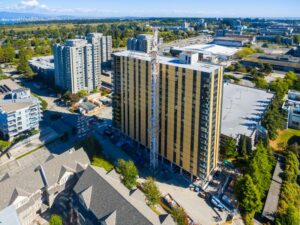By Laura Bohnert
Finally, summer is almost here, and that means clear weather and even clearer roads—right? Not necessarily. The warm weather may eliminate the winter weather hazards from the road, but it also introduces a new hazard: road construction.
It isn’t the construction itself that is creating an increasing risk for drivers, though—nor is it the drivers who are at the highest risk. Driver carelessness and disregard for reduced speed zones are making construction zones dangerous places for the road crews who are manning them.
Each year, approximately 900 collisions occur in road and utility construction zones in Alberta. Those collisions result in injuries, millions of dollars in property damages, and dozens of fatalities (of either workers or motorists).
The reason for the high fatality rate? Driver carelessness and speeding.
Recent statistics have shown that approximately 46 per cent of Alberta drivers are not slowing down for construction sites, despite increased signage—and increased fines (speed fines are doubled in construction zones).
Speed isn’t the only problem—drivers are also going through barricades and driving past flag people who are trying to stop traffic—but speed is a big problem. Many drivers don’t consider the 10km/h or 20km/h faster they are driving to present that much higher a risk, but the faster you drive, the longer it takes to stop. According to the World Health Organization, pedestrians are 8 times more likely to be killed when struck at 50km/h versus 30km/h—and those odds continue to increase as the speed does.
Especially in construction zones, where many of the risks can be hidden and unexpected.
Construction zones feature tighter lanes, disrupted lanes, and re-routes that can increase proximity to oncoming traffic, all of which can increase the risk of collision with other road users; however, road construction zones also feature road workers who may be on the ground working with hand tools, acting as flag persons, hidden behind large or moving equipment, or operating large and moving equipment that has to be responsive to its own set of hazards and risks.
Reduced speed limits are designed to improve stopping ability in response to the type of increased risk—to both drivers and workers—that is involved, and an inability to stop in time could very easily cause unnecessary injuries or fatalities.
A study conducted by PIRCS (The Partners in Road Construction Safety) across construction zones in five cities (Edmonton, Calgary, Fort McMurray, Medicine Hat, and Red Deer) showed Edmonton drivers to slow down more for construction zones, with the average speed over the limit (10km/h) below Alberta’s average of 12km/h over the limit. Highway 63 represented one of the most high-risk zones, with drivers traveling at an average of 20km/h over the posted limit through those construction zones; and 90 per cent of drivers were shown speeding through construction zones in Red Deer.
Are putting yourself and your road crews at risk? Remember to slow down in construction zones this summer.







More Stories
High-speed action, some trickery and huge hits mark the start of the Wolverines’ 2025 playoffexperience
Reminiscing with Residents: Spruceview edition with Jurgen Moll
A great ending to the regular season, with the post-season coming up next